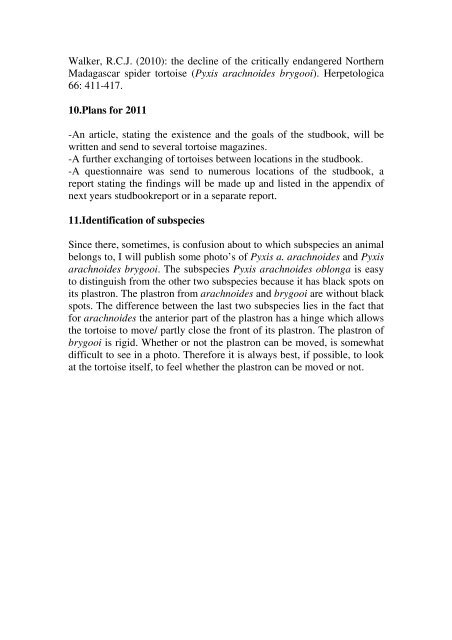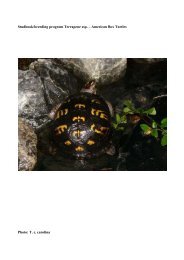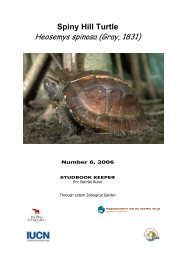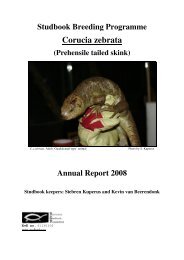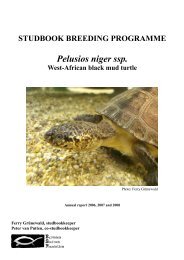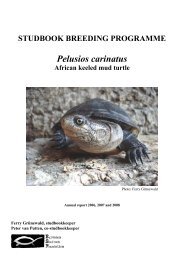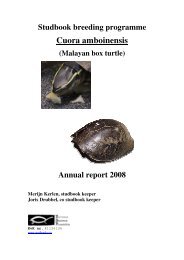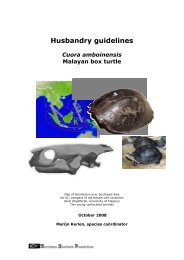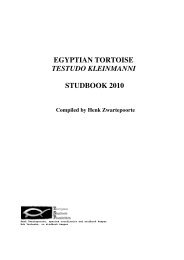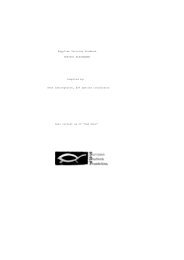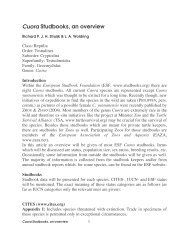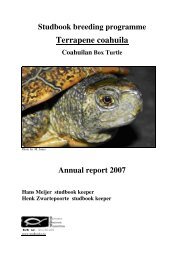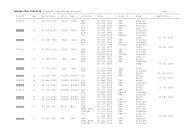Studbook breeding programme PYXIS ARACHNOIDES (Malagasy ...
Studbook breeding programme PYXIS ARACHNOIDES (Malagasy ...
Studbook breeding programme PYXIS ARACHNOIDES (Malagasy ...
You also want an ePaper? Increase the reach of your titles
YUMPU automatically turns print PDFs into web optimized ePapers that Google loves.
Walker, R.C.J. (2010): the decline of the critically endangered Northern<br />
Madagascar spider tortoise (Pyxis arachnoides brygooi). Herpetologica<br />
66: 411-417.<br />
10.Plans for 2011<br />
-An article, stating the existence and the goals of the studbook, will be<br />
written and send to several tortoise magazines.<br />
-A further exchanging of tortoises between locations in the studbook.<br />
-A questionnaire was send to numerous locations of the studbook, a<br />
report stating the findings will be made up and listed in the appendix of<br />
next years studbookreport or in a separate report.<br />
11.Identification of subspecies<br />
Since there, sometimes, is confusion about to which subspecies an animal<br />
belongs to, I will publish some photo’s of Pyxis a. arachnoides and Pyxis<br />
arachnoides brygooi. The subspecies Pyxis arachnoides oblonga is easy<br />
to distinguish from the other two subspecies because it has black spots on<br />
its plastron. The plastron from arachnoides and brygooi are without black<br />
spots. The difference between the last two subspecies lies in the fact that<br />
for arachnoides the anterior part of the plastron has a hinge which allows<br />
the tortoise to move/ partly close the front of its plastron. The plastron of<br />
brygooi is rigid. Whether or not the plastron can be moved, is somewhat<br />
difficult to see in a photo. Therefore it is always best, if possible, to look<br />
at the tortoise itself, to feel whether the plastron can be moved or not.


